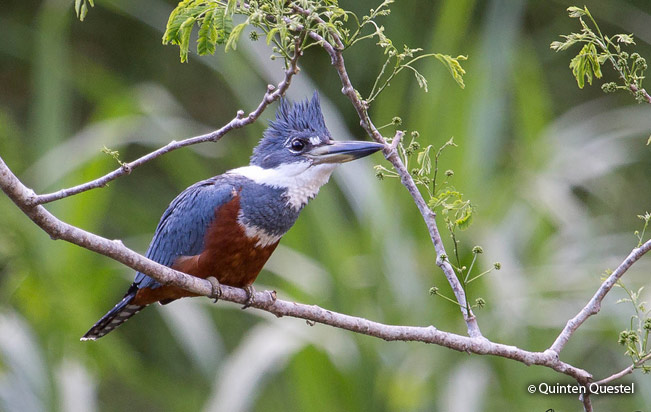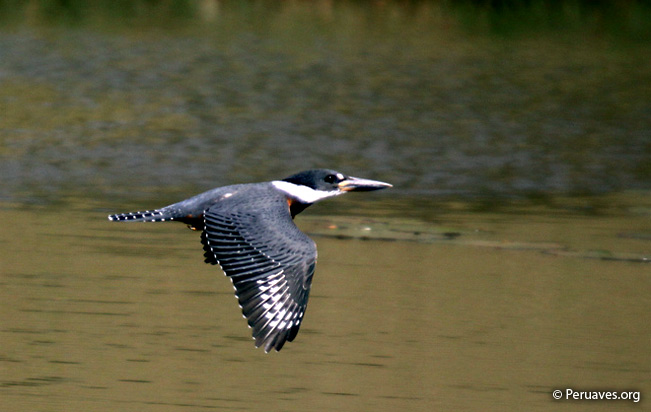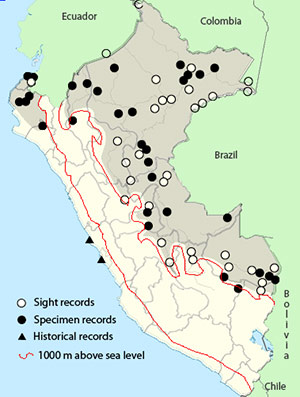Order: Coraciiformes | Family: Alcedinidae | IUCN Status: Least Concern

Age: Adult | Sex: Female | Loc. Mato Grosso, Brasil

Age: Adult | Sex: Male | Loc. Mato Grosso, Brasil

Age: Adult | Sex: Female | Loc. Mato Grosso, Brasil

Age: Adult | Sex: Unknown | Loc. Mato Grosso, Brasil
Status: The Ringed Kingfisher is generally uncommon in large rivers, lakes, and open bodies of water in Amazonia and also in extreme northwest Peru. Common near breeding colonies on dirt cliffs along large rivers. It also occurs in Co, Ec, Br, Bo, Ch.
Name in Spanish: Martín Pescador Grande.
Sub-species: Ringed Kingfisher (Megaceryle torquata) (Linnaeus, 1766).
Meaning of Name: Megaceryle: Gr. Megas= large, ceryle: Kerulos= a mythological bird mentioned by Aristotle. torquata: L. torquatus= collar. Large birds that resemble a mythological bird figure, with a collar.
 Voice
VoiceReferences:
-
- Species range based on: Schulenberg, T. S., D. F. Stotz, and L. Rico. 2006. Distribution maps of the birds of Peru, version 1.0. Environment, Culture & Conservation (ECCo). The Field Museum. http://fm2.fieldmuseum.org/uw_test/birdsofperu on 11/09/2014.